 |
| Gran Fury |
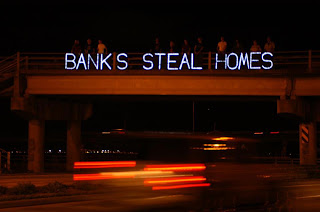 |
| another reason to riot. |
 |
| When legal advocacy around issues such as budgets and stop and frisk bear little, people turn to other means. |
It was a calm end to a
roaring week of cycling, teaching, speaking and still more cycling.
I spent a lot of the
week thinking about the ways we try to enact change - be it through formal
channels or social networks and cultural change. Vito
Russo, of Gay Activist Alliance and ACT UP, used to remind the world that social
change was not going to happen through laws. It was going to happen through
celluloid, movies, and cultural animation.
These thoughts were on my mind all week as Times Up! looked to the
movies and arts to influence and inspire.
It was a week of street riots and peace rides, history making and field
work.
Thursday night Brennan
showed movies at the first Times Up! movie night, followed by the No
Criminality Suspected Ride, which borrowed from the work of graffiti
artists to inspire a conversation about cycling. Sometimes art and direct action are what
helps ignite conversations about the world in ways few other forms can.
These ideas churned
through my mind during my 50 minute ride up from our home in Brooklyn up to
104th and 5th Ave for the Museum of the City of New York conference on Teaching
Social Activism in the Classroom. The museum's
show Activist New York highlights the ways regular people have impacted the
city's future.
I was speaking on "Engaging and Activating: Teaching Activism to College Students." The abstract for my talk noted:
I was speaking on "Engaging and Activating: Teaching Activism to College Students." The abstract for my talk noted:
New York is being remade
in front of our very eyes. As an
educator whose organizing around non-polluting transportation, sustainable
development, housing, and AIDS activism constitutes a major part of his life, I
was pleased to see these topics highlighted in your show Activist New York. Social
activism has long influenced who we are and what kind of a city we live in.
Note to the reader. The show features countless images of
activism in New York, from Settlements to Stonewall, Civil Rights to ACT UP,
and the Battles of the Bikes Lines we've seen in recent years. Seeing this show helps us contextualize
recent activist struggles over safer streets for all.
 |
| Images from AIDS activism, civil rights, and neighborhood preservation movements, including the famous slogan Improve Don't Move from December 1980. |
The history and practice
of activism offers countless pedagogical opportunities.
A core component of the
Common Core Curriculum my college, City Tech/CUNY is Community/ Civic Engagement.
I address
this topic through a course in community organization. The goal for
community organizing, a course which forms the foundation of my teaching, is to
establish the grounding for the budding practitioner's subsequent social
justice work. Throughout community
organization students engage in high impact learning practices such as team
projects in which they engage with community groups around issues which impact
their lives. I have had students
organize projects around creating community gardens and centers for the
elderly. Each student is asked to pick a
topic around which they feel a personal connection. They are asked to conduct research around the
scope of the problem, its history, who is involved, what needs to be done, and
what are the best strategies and tactics in which to address the problem. Along the way, I ask each student to connect
with community resources, learning to be part of the solutions for a global
city. Countless students have taken up
this call, developing the tools to help remake New York through activism and
community organization. Through such community
organization regular people carve out solutions for a range of problems we face
in our global city.
Over and over again, the
first step in such efforts is getting to the bottom of issues - what's at stake,
whose involved, what happened, what's the scope of the issue. Friday, some of the Living Lab fellows from
my college took a trip out to Sheepshead
Bay, to check out where the community is at after a rough few months since
Sandy. We were there to pilot surveys
for disaster preparedness moving
forward. Instead of riding a bike I did
for the other Times Up! relief rides out to the Rockaways and Ft Tilden, I took
the subway from Park Slope to Brooklyn College, where my ten mile trip dropped
me off a few miles short of our destination. Watching the B44 buses pass me by at the
connecting stop, the reality of this community's isolation from the rest of the
city was daunting. Instead I ran down
Nostrand from Ave H to Z to the bay. The
45 minute jog offered ample time to reflect on the limitations of the woefully inadequate
rapid transit system out there, which along with cars, broke down during the
storm. We met at Best Western, where we
paired off with community partners, from local organizations. Fran took us down her block where the water rose some four feet
during the storm, just gushing down the street to her home. Those who did not leave immediately were left
to fend for themselves without electricity for months. While FEMA was nowhere to be found, Occupy
Sandy arrived the day after the storm, bringing supplies for pets, food, and
water. Most of Fran's street was heightened
during construction and repairs in the 1970's.
The same could not be said of the
courts, which run below street level in between streets, and are inaccessible
to most automobiles. While water flooded the basements on Fran's street, it ran
up to the first and second floors on the Courts, leaving folks stranded for
days while their apartments filled with water.
Most everyone we talked to stayed for the storm. Yet, what of the weakest, the most vulnerable,
the disabled, or elderly on the block, where were they to go? Few had any desire to leave, so they survived
with the support of their neighbors. But
now most are willing to be part of an energy outreach list in the event of
another storm. Fran and her neighbors
smoked cigarettes and swapped stories.
They have been through a lot. Yet, far too many communities impacted
have been left out in the cold after a long cold winter.
 |
| Water largely flooded the courts where people were left hoping for assistance. |
Their
experience was with me all weekend, hanging out with the kids, riding to the
museum and back for the Times Up!
peace ride. But where does peace fit in a world with so
much neglect, hunger, and pain? It is
what we want with the gardens and the space for a sustainable future. But can we achieve it? That's another question. Is there another
vocabulary for living beyond love and hate, violence and peace?
What are you thinking about as you ride Nadette asked us - bikes and peace some answered; others gardens or health. I answered "Riots'' thinking about the events on Flatbush. Sometimes when you do everything you can do and it still doesn't work, a riot can change history. When no one can hear your silent screams, sometimes other means are necessary to make a point. I adore the lessons of Gandhi and the impulse to aggressive non-violence, yet I do not really think a street riot is a huge departure from this repertoire. Sometimes it is an extension of it, a way of moving the city forward, hopefully by waging non-violence, and igniting a peace riot.
What are you thinking about as you ride Nadette asked us - bikes and peace some answered; others gardens or health. I answered "Riots'' thinking about the events on Flatbush. Sometimes when you do everything you can do and it still doesn't work, a riot can change history. When no one can hear your silent screams, sometimes other means are necessary to make a point. I adore the lessons of Gandhi and the impulse to aggressive non-violence, yet I do not really think a street riot is a huge departure from this repertoire. Sometimes it is an extension of it, a way of moving the city forward, hopefully by waging non-violence, and igniting a peace riot.
 |
| Effie's paper don't walk, dance |
Throughout
the ride, I loved thinking about this as we left the Gandhi statue to the House
of Sufism where we read Rumi. Keegan
lead the ride with Nadette, riding the Times Up! Bullett, pulling the
soundtrack to the revolution.We sang
to peace train and danced to won't don't
we do it in the road.
 |
| Words worth singing and dancing to from the Surf Bard |
And we kvelled
at John and Yoko's former home on Bank Street.
I still think I want to hold your hand is one of the great love anthems,
peace anthems of all time.
 |
| Hanging out at John and Yoko's house on 105 Bank Street and riding downtown. |
And we
enjoyed the scenes of from Tom Otherness' "Real
World'' installation
in Battery Park. There the city
becomes a playspace where pennies no longer declare 'ín god we trust''. Otherness found that a little
overbearing. Here workers and radicals
mingle with everyone else in a whimsical world, which just might offer some
insights into what our world might look like, what it does look like.
Otterness’s artwork goes beyond mere appearance. His work always has a more obscure meaning, normally too subtle for children to pick up on. The Real World, for example, represents many different parts of the New York society. His work is meant to depict the social strata of our community. Statues of predator and prey are meant to show struggle, while his other sculptures are created in such a way to symbolize blue collared workers, white collared workers, and radicals. Several of his statues also have sexual implications as well
According tothe Battery Park City web site, Otterness’ work
“is a map that tells stories of the real world beyond the playground […]
stories about struggle, lust, power, loss, humor, fantasy, and death. Otterness
believes that children appreciate the direct manner in which the stories are
given to them, without ever being told what to make of it all. It is the real
scoop on life without the sugar coating.”
According to
 |
| Workers and radicals, cyclists and statues together again ... all part of the real world. |
 |
Photo and caption by Outi Popp
10 years ago we were marching against Iraq war but we were ridiculed. Still hoping 2 c Bush, Cheney, Blair in Haig and still marching and biking for peace! Pic: Piece of Berlin Wall @Battery Park City. Time's Up & Peace Museum Peace Ride. |
Play,
like love and peace, moves in a tragicomic continuum, etched with violence and
hope, exploration and liberation, frustration and expectation. Ten years ago, we marched and screamed against the war, trying to create images of care in a world of violence. they laughed at us. We were arrested, detained and prooven right. These
contrasts are built into the very fabric of the this global city. Rides such as this mix art and play with
direct action in a delightful immediate ways. But they are also responses to a world of
violence, of car crashes, hostility and neglect. They marks contrast with the visceral experiences of
those coping with the aftershocks of the killing of unarmed Kimani
Gray, though they need not. The
riots taking place in Flatbush last week, mark a start continuation in an era
of riots, extending from Los Angeles to Tahrir Square. Along the ride, we passed the Stonewall Inn,
where another historic riot changed history.
It also included a kickline and chant: "We Are the Stonewall Girls,
We Wear our Hair in Curls." I first
started witnessing riots in LA in 1992, connecting this experience with other
uprisings of the era. Sometimes, doing
the right thing does not work, particularly when a community is left behind,
when a community has worked to create change through the ballot box and see
still more cuts and sequestration, budget cuts, and continued stop and frisks.
Yet, a
riot is a declaration of existence, Cleve Jones explained after the White Night
Riots in San Francisco in 1979. As Alain
Badiou explains in The Rebirth of
History: Times of Riots and Uprisings, we live in an era of riots,
"wherein a rebirth of history, as opposed to the pure and simple
repetition of the worst, takes shape." (p.5 ). Riots, such as those taking place in Flatbush,
these moments offer "an abrupt alteration in the relationship between the
possible and the impossible...."
They create "a de-statification of the issue of what is possible." (p.94).
They change our thinking forcing us to challenge the oppressive, racial
profiling, prison industrial complex funding, balancing budgets on the poor
supporting, neoliberal politics as usual.
The only way I know to push back against the racist, sexist, anti-gay
NYPD is with a riot. You can sit at a
million meetings with them and they will ignore you, while checking their
messages. I would propose a peace riot
where we dance in streets, fighting injustice, while offering an affirmative. I
would propose we use art, stories, organizing, and direct action to challenge
entrenched systems of power.
 |
| Resistance takes shape in countless forms. OWS Resistance |
 |
| PROTESTA CONTRA LA TALA DE ARBOLES |
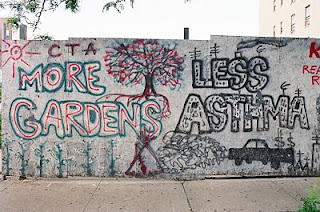 |
| More Gardens, Less Asthma! by Geoffry Croft, NY Parks Advocates |
Peace
riots open up a place where we see the yin and the yang of experience, the
productivity of a riot and violence of the status quo. They help us see there is a something we can
learn in all these moments. We can
create rivers of joy, abundances of justice, gardens, art, disruption,
pleasure, and dance in the snow. Like a
riot itself, some see a snowy night in March as ugly, but its more fun to see
the beauty.
At least this was our thinking as the snow flakes cascaded from the skies of Brooklyn and we descended from the forth floor and out into the snow streets last night, enjoying what the world was offering us.
 |
| Snow in Washington Square Park. Photo by Madeline Nelson |












































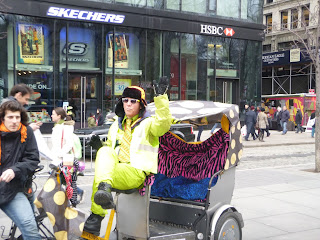





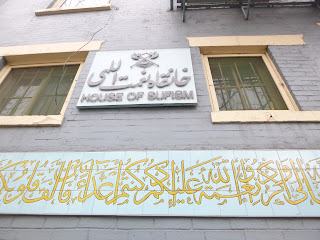







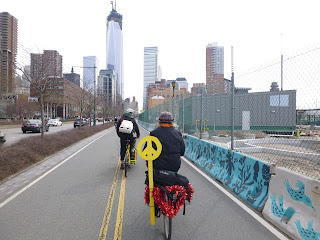



































No comments:
Post a Comment